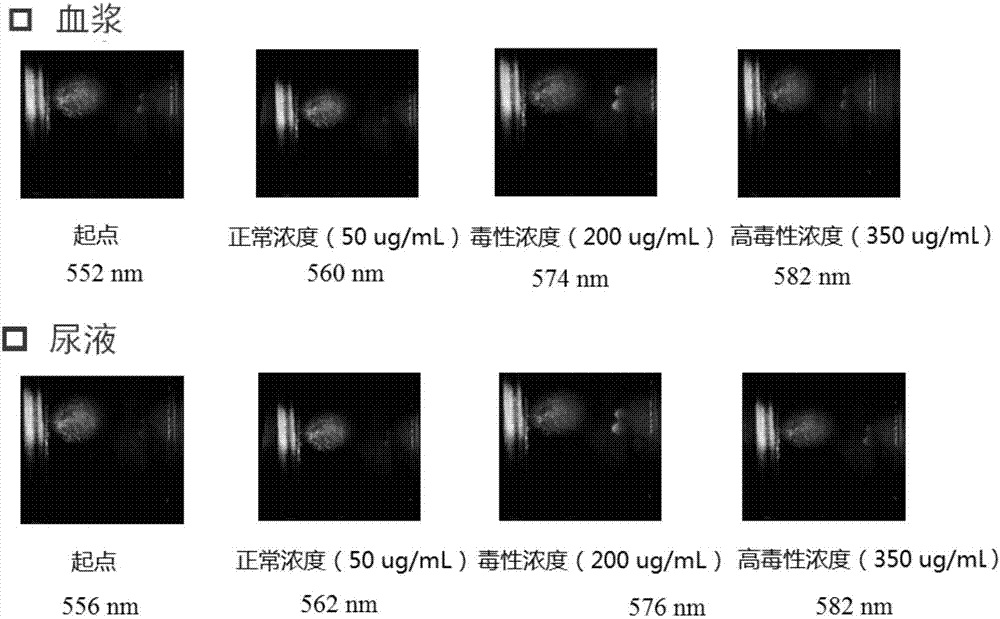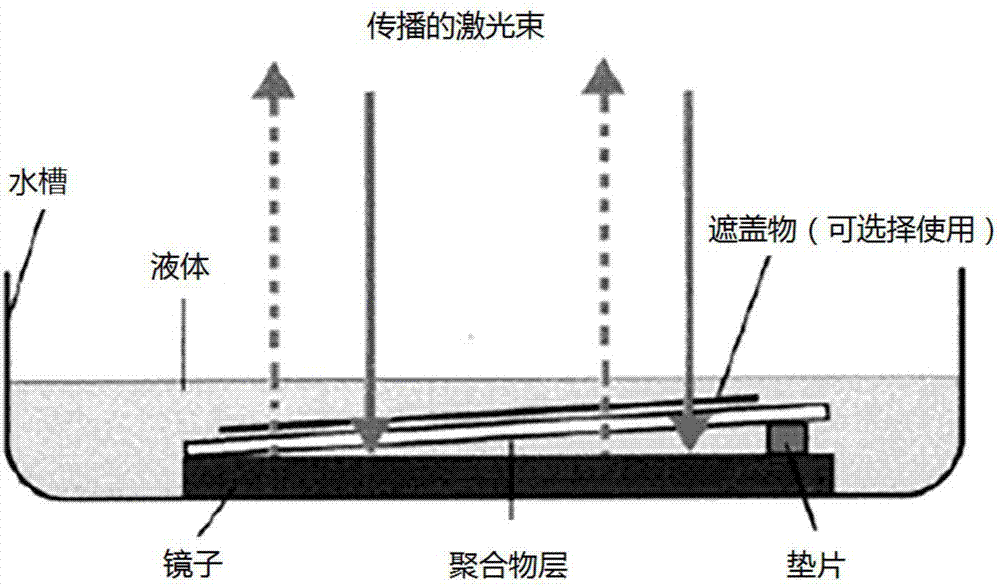A method for quantitative analysis of ibuprofen in a biological sample by utilizing a cyclodextrin-modified holographic sensor
A holographic sensor and quantitative analysis technology, which is applied in the direction of material analysis by observing the influence of chemical indicators, analysis by making materials undergo chemical reactions, color/spectral characteristic measurement, etc., can solve the problems that cannot meet the needs of research analysis and clinical testing , reliance on precision and expensive instruments, insufficient detection sensitivity, etc., to achieve the effect of simple and flexible method, flexible and diverse device structure, and high recovery rate of standard addition
- Summary
- Abstract
- Description
- Claims
- Application Information
AI Technical Summary
Problems solved by technology
Method used
Image
Examples
preparation example Construction
[0045] 3.2 Preparation of spiked plasma samples
[0046] Slowly thaw the purchased plasma (H4522-100mL, Sigma-Aldrich) in an ice bath, filter it through a 0.22 μm filter membrane, dilute it with a phosphate buffer solution with an ionic strength of 100 mM and a pH of 7.5, and vortex After vortexing, centrifuge at 3600 rcf at 4°C for 10 min, and carefully remove the supernatant as a plasma sample.
[0047] In order to ensure that the pH and ionic strength of the sample solution are the same, the ibuprofen standard solution (ionic strength is 100 mM and pH is 7.5) of the same volume and different mass concentrations is added to the plasma sample to obtain plasma samples with different spiked concentrations.
[0048] Plasma samples and an equal proportion mixture of phosphate buffer solution with an ionic strength of 100 mM and a pH of 7.5 were used as a blank sample solution.
[0049] 3.3 Preparation of spiked urine samples
[0050] Since the pH of human urine is 5.5 to 7, the...
Embodiment
[0054] 1. Preparation of glass slides modified with silane reagents
[0055] Spread the glass slide on the tray, pour an appropriate amount of 2% (v / v) silane reagent acetone solution, shake the tray evenly, make the slide glass completely immersed in the acetone solution, tilt slightly, suck out the acetone, and put the tray Store in a dark room at room temperature. After overnight, wash with deionized water, wipe dry, and put in a small glass slide box for later use.
[0056] 2. Preparation of polymer
[0057] Accurately transfer the polymer monomer HEMA and the cross-linking agent EDMA with a volume ratio of 99:1 into a 1.5mL doffer tube with a pipette gun, and add an equal volume of 2% DMPA isopropanol solution (w / v, mass-volume ratio ), and mix well with a vortexer. Accurately suck out 100 μL with a pipette gun, drop it on the surface of the aluminized polyester film, carefully press the silanized glass slide on the surface of the above solution, try to avoid the gener...
PUM
| Property | Measurement | Unit |
|---|---|---|
| thickness | aaaaa | aaaaa |
| correlation coefficient | aaaaa | aaaaa |
| recovery rate | aaaaa | aaaaa |
Abstract
Description
Claims
Application Information
 Login to View More
Login to View More - R&D
- Intellectual Property
- Life Sciences
- Materials
- Tech Scout
- Unparalleled Data Quality
- Higher Quality Content
- 60% Fewer Hallucinations
Browse by: Latest US Patents, China's latest patents, Technical Efficacy Thesaurus, Application Domain, Technology Topic, Popular Technical Reports.
© 2025 PatSnap. All rights reserved.Legal|Privacy policy|Modern Slavery Act Transparency Statement|Sitemap|About US| Contact US: help@patsnap.com



